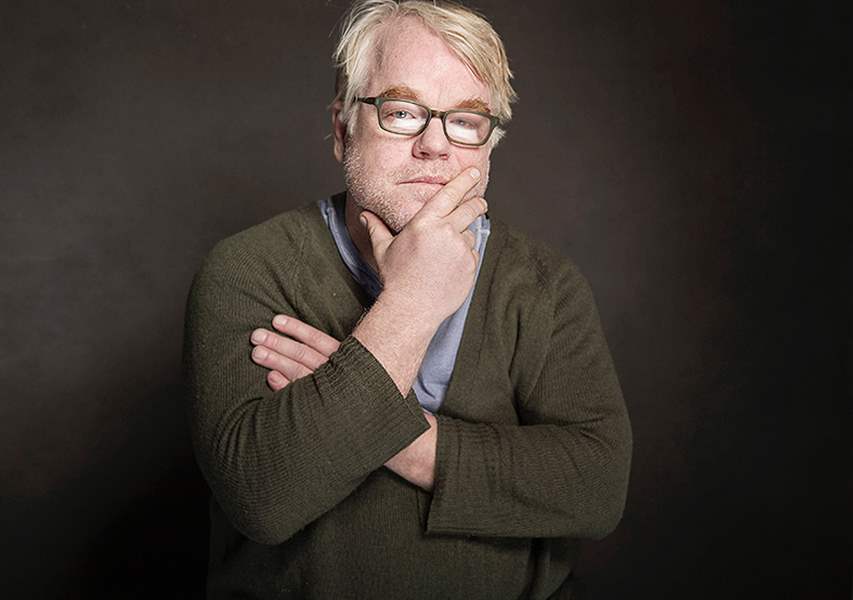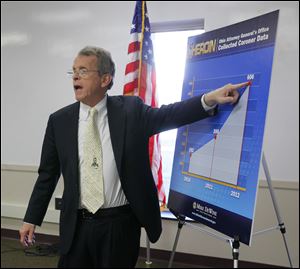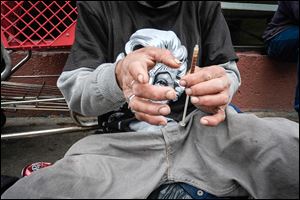
Resurgence of heroin exposed
Actor’s death shines light on U.S. ‘epidemic’
2/9/2014
Oscar winner Philip Seymour Hoffman died of a suspected heroin overdose Feb. 2 in his New York apartment.
ASSOCIATED PRESS

Oscar winner Philip Seymour Hoffman died of a suspected heroin overdose Feb. 2 in his New York apartment.
NEW YORK — The death of Oscar-winning actor Philip Seymour Hoffman underscores a surge in heroin use reminiscent of the 1970s and early ’80s.
More than 660,000 Americans used heroin in 2012, health officials say — nearly double the number from five years earlier — and users tend to be more affluent than before, living in the suburbs and rural areas rather than the inner city.
“It’s reached epidemic proportions here in the United States,” said Rusty Payne, a Washington-based spokesman for the Drug Enforcement Administration.
Mexican cartels are pushing ever-larger amounts of heroin across the southwestern border, officials said.
Heroin has flooded the Northeast and reached a large market of American pain-pill addicts seeking a less-expensive high. Overdoses and emergency-room visits have skyrocketed across the country, officials say, and more are dying from a drug whose purity can be hard to judge.
Los Angeles often was the final destination for Mexico’s trade, but recently that distribution has spread across the United States, said Sarah Pullen, a special agent in the DEA’s Los Angeles office. “Increasingly, heroin addicts are former prescription drug abusers,” Agent Pullen said. “They become hooked on painkillers and move over to heroin because it is available for far cheaper.”

Ohio Attorney General Mike DeWine points to statistics showing an increasing rate of heroin-related deaths. ‘We’re losing at least two people a day, probably many more,’ Mr. DeWine said in a November visit to Toledo.
The consequences have been increasingly lethal. In 2010 — the latest year such data were available — heroin overdoses killed more than 3,000 people across the United States, a 45 percent increase since 2006, according to the DEA.
In Ohio, Attorney General Mike DeWine last fall dedicated $1 million to a new heroin unit designed to help law enforcement fight the state’s “heroin epidemic.”
Locally, data released by Lucas County Coroner James Patrick show heroin-related deaths doubling annually in the county since 2010, from eight that year to 15 in 2011, and 31 in 2012.
As of October, 52 heroin-related deaths occurred in 2013, according to Dr. Robert Forney, chief toxicologist at the Lucas County Coroner’s Office. He added that he has tentative findings that the total number for the year was about 80.
Dr. Forney said the exact number was unavailable because not all the cases from December had been ruled.
Most of the Lucas County victims of heroin overdoses were middle-aged, suffered from chronic pain, and had graduated from prescription painkillers, according to Dr. Forney.
Mr. Hoffman’s death at age 46 comes just a week after Pennsylvania officials announced that a batch of heroin spiked with fentanyl had killed at least 22 people in January.
Mr. Hoffman was found dead in his New York apartment with a needle in his arm. In the dwelling were dozens of glassine packets, some containing powder, law enforcement officials said. Some packets were stamped Ace of Spades, marking them as a brand of heroin. Mr. Hoffman had battled addiction for years.
Glee star Cory Monteith, 31, also struggled with drugs. He died in a British Columbia hotel room in July after taking a combination of heroin, alcohol, morphine, and codeine.
Heroin was a drug of choice for celebrities and inner-city addicts in the 1970s. But its popularity declined in the 1980s as the HIV/AIDS crisis brought worries of infection-carrying needles. Crack cocaine supplanted heroin as a cheap, powerful option for poorer users.

A drug addict prepares a needle to inject himself with heroin in the Skid Row area of Los Angeles. Officials said more than 660,000 Americans used heroin in 2012 — nearly double the number reported five years earlier. Overdoses and emergency-room visits have skyrocketed, they said.
Now, experts say, Americans’ widespread abuse of prescription drugs has created a market for heroin, which gives users a powerful euphoria similar to that of pain pills.
“This last year, we’ve seen a big uptick in heroin use. It’s become rapidly very popular,” said Theodore Cicero, a professor of neuropharmacology at Washington University in St. Louis. “But now it’s becoming a rural and suburban issue rather than an urban issue.”
Most states had an increase in heroin patients from 2000 to 2010, according to federal statistics.
The drug was particularly accessible in the Northeast, where officials say New York City serves as the transit point for heroin coming via road from the Southwest.
In New York, one oxycodone pill on the street costs about $30. (Oxycodone is an ingredient derived from opium; in pill form, it’s marketed as OxyContin.)
For about the same price, buyers can get six glassines of heroin, said Erin Mulvey, a DEA spokesman in New York.
“Who would have ever thought in this country it would be cheaper to buy heroin than pills and obtain them more easily?” the DEA’s Agent Payne said.
Last month, Vermont Gov. Peter Shumlin devoted much of his state of the state address to the state’s heroin problem, calling on the Legislature to pass laws encouraging treatment and seek ideas on the best way to prevent people from becoming addicted.
The state saw a 250 percent increase in patients receiving treatment for heroin use since 2000.
“What started as an OxyContin and prescription drug addiction problem in Vermont has now grown into a full-blown heroin crisis,” Mr. Shumlin said in January.

‘Glee’ actor and musician Cory Monteith died July 13 after mixing heroin, alcohol, morphine, and codeine.
That message resonates with Aram Homampour, 46, who abused alcohol, Xanax, and cocaine before he started smoking heroin. His addiction took him to rock bottom when he was about 34 years old, he said.
“Bottom line, it presents your consciousness with another reality, that at times is so amazing that if you have the power to visit it every day without destroying your life, you would,” said Mr. Homampour, who has been clean for nine years and is the chief operating officer of the Malibu Beach Recovery Center in California. “By the time that you figure out it does destroy your life, you’ve lost the power of choice.”
The striking thing about heroin’s most recent incarnation is that the drug is spreading into suburban and rural towns, where it is used mostly by young adults between the ages of 18 and 29, said Jim Hall, an epidemiologist who studies substance abuse at Nova Southeastern University in Fort Lauderdale, Fla.
“People think that it is someone who is a bum, who’s homeless, who has no money and who is sort of living at the very bottom,” said Michael Clune, a former addict who wrote the memoir White Out: The Secret Life of Heroin. “When the truth is, it really is everywhere.”